DIWALI, also known as Deepavali or Divali, is the Hindu festival of lights. Diwali is celebrated in India, Trinidad, Guyana, and many other countries and islands around the world. It celebrates the “victory of light over darkness, good over evil, and knowledge over ignorance.”
Diwali will be celebrated this year on November 12, 2023.
According to Hindu-Blog.com, Diwali is more than a colorful festival and is not all about celebrations, food,, and revelry. The Diwali lights which symbolize the victory of good over evil also suggest the need for the removal of spiritual darkness created by ignorance and ego.
WHAT DOES LIGHT OVER DARKNESS MEAN?
Light is also a metaphor for knowledge and consciousness—to awaken who you truly are and the divine presence within you. When we become conscious, we can free our true higher self which is hidden and trapped inside this material world(the ego). We have to recognize and honor this light inside us–this light that came with us, that will never desert us—and allow it to shine bright.
Whenever we choose any of the following we are moving closer to the light:
- Living a virtuous life and performing our duties selflessly
- to be in the present
- to love
- to forgive people and the painful past
- to release toxic people and influences
- to give freely even when we don’t think we have enough
- to tolerate the intolerable
- to understand
- to not criticize, judge, or condemn when we think someone is different from us
- to have faith and hope in your darkest moments
- to think positively when negativity attacks you
- to make time for prayer and meditation when life seems too busy
- to take steps to control our minds and overcome fear
- to overcome addictions of every kind even though it feels so good to do it
- to nourish our bodies, etc.
As my Aunty Iya recently said, ‘detachment’ – means detachment from all that does not serve our best interest. There will be tremendous peace at the end of this journey if we make the effort. I am a living testimony to this truth.
There are various stories of the origins of Diwali, but growing up, I learned that it commemorates the return of Lord Rama (along with Ma Sita and Lakshman) from his 14-year-long exile and vanquishing the demon king Ravana. In joyous celebration of the return of their king, the people of Ayodhya, the capital of Rama, illuminated the kingdom with earthen diyas (oil lamps) and set off firecrackers. (For more, check out learnreligions.com).
 HOW TO PREPARE FOR DIWALI?
HOW TO PREPARE FOR DIWALI?
WHY DO HINDUS LIGHT DEEYAS ON DIWALI DAY?
WHAT WAS DIWALI LIKE IN OUR VILLAGE DECADES AGO?
Tat-savitur Vareñyaṃ
Bhargo Devasya Dhīmahi
Dhiyo Yonaḥ Prachodayāt
According to Sathyasai.org, the Gayatri has three parts: 1.Praise, 2.Meditation, and 3.Prayer. First, the Divine is praised, then it is meditated upon in reverence and lastly, an appeal is made to the Divine to dispel the darkness of ignorance and to awaken and strengthen the intellect(http://www.sathyasai.org/devotional/gayatri) .
WHAT TO EAT ON DIWALI?
On Diwali day we also prepare a plethora of vegetarian dishes which, traditionally, are eaten on a leaf also called soharee leaf.
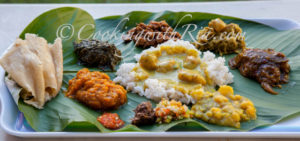
I invited Mummy(Indra), Aunty Iya, and Aunty Jang, her sister, to prepare a Diwali Feast with me. Press play below to watch how we prepared it, from start to finish!
A typical Diwali Feast includes:
DIWALI APPETIZER and SNACKS
Aloo Pie, Pholourie, Saheena, Kachori, Dhal Pholourie, Boiled Mango Chutney, Tamarind Chutney, Raw Mango Chutney
DIWALI MAIN COURSE
- Pumpkin talkarie – pumpkin cooked with basic ingredients including onion, garlic and hot pepper. It’s steamed until tender and mashed into a smooth paste-like consistency. A dash of roasted ground geera, also known as cumin is added at the end of cooking to highlight the flavors and add an earthiness to the dish. CLICK for pumpkin recipe
- Curry channa and aloo– Chickpeas and potatoes are simmered until tender in a well seasoned and spiced curry sauce. In my family we occasionally add an eggplant to the mix! Click here for Channa and aloo Recipe
- Curry Channao and Aloo with Baigan. A delicious variation to curry channa and aloo with eggplant or baigan. Channa with Baigan and aloo Recipe here
- Bhagee – Spinach (dasheen bush or chowrai bhagee-click here for chowrai bhagee recipe) is cooked again with the most basic ingredients including onion, garlic, and hot pepper to really allow the flavor of the spinach to reach its full potential. It’s more of a technique than the seasoning that makes this a special dish. Click here for bhagee recipe
- Mango talkarie – The tartness of the green mangoes is balanced with sugar and flavored with lots of garlic, hot pepper and amchar massala. It’s one of the sweet components on the leaf above. Click here for Mango Talkarie Recipe.
- Curry Mango: The difference between mango talkarie and curry mango is that curry mango is made with curry, whereas mango talkarie is made primarily with amchar massala and geera. Click here for Curry Mango Recipe
- Chaitaigne – breadnut (or katahar) is cleaned and chunkayed with curry, turmeric, bandhania, garlic and hot pepper, then fresh coconut milk is added to add a natural creaminess and enhance the flavor of the chaitaigne. Click here for Chaitaigne Recipe
- Carhee | Kurhi – A dish traditionally reserved for the pros–not many have the patience and wherewithal to understand the intricacies invovled in the preaparation of this dish. Split pea powder is used in two ways. First it is seasoned with bandhania, garlic, turmeric, then water is added to make a dough. The dough is squeezed into hot oil to make fried balls, also known as pholourie or ‘boulders’. The next step involves chunkaying the split pea powder which was mixed with water. Once this comes to the right consistency, the pholourie (balls) are added and cooked until it soaks up all the sauce and softens to make what we call boulders. Carhee | Kurhi is eaten over a pile of white rice. Click here for Carhee | Kurhi recipe.
- Mother in law – No, we don’t cook our mother – in – law! Mother in law is a spicy condiment that accompanies the entire shebang and adds spicy component to balance the rich flavors of the dishes.
- Plain Steamed white Rice – Many love to mix all the veggies with the carhee and rice. Some purists love to eat it with just the carhee. The option is yours!
- Paratha Roti – For the purist that reserve the rice just for the carhee. The roti is used to scoop up the veggies. There are no rules, just personal preferences and tastes. No judging whatsoever.CLICK HERE for paratha (Buss up shot) recipe
- Dosti Roti – Dosti roti is a layered roti that’s looks more elegant than the paratha. It’s made with the same ingredients and will work just as well!
- Dhalpuri Roti – While paratha is the most popular, dhalpuri roti is also a good option.
Dosti Roti Recipe below:
DIWALI SWEET TREATS
For dessert, we share bags of parsad which include fruit, Gulab Jamoon, barfi, kurma, ladoo, roat and shaved coconut. Click here for Parsad Recipe
Kurma – this is a crunchy fried dough – flavored with cardamom, ginger and cinnamon. Click here for Kurma Recipe
Gulab Jamoon – kurma’s fat cousin (Click for Recipe)- it’s a softer version and equally delicious!
Ladoo- is a delicious and popular sweet treat made in Trinidad around Diwali and during the year for poojas and prayers. Ground split peas are made into a batter and fried. The fried dough is then ground and mixed with ginger, powdered milk, cardamom, and condensed milk. After it all comes together with a sugar syrup (phaag).
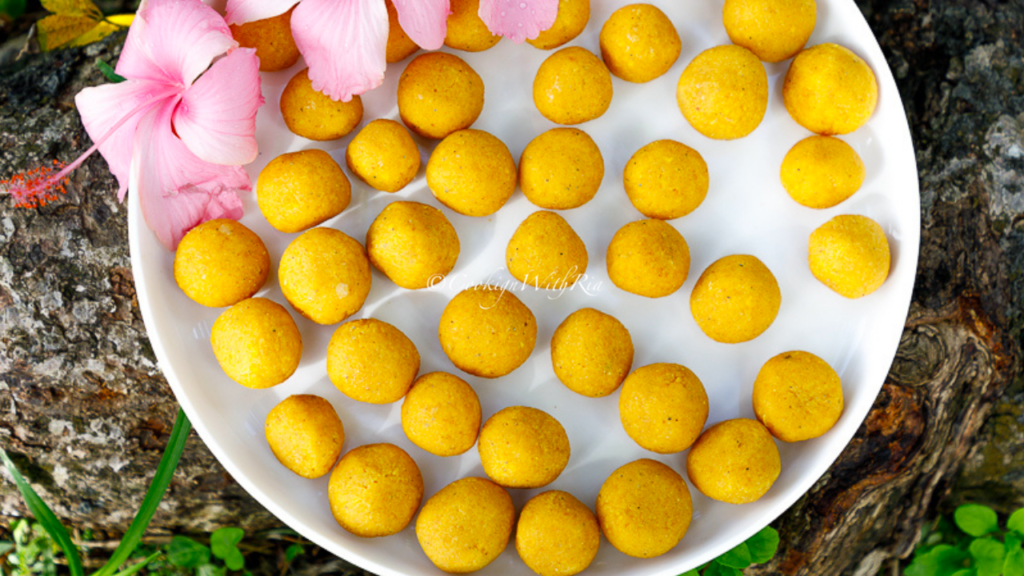
Some folks keep it simple and just prepare a pot of Sweet Rice – also knows as rice pudding.
WHAT is DIWALI NAGAR in TRINIDAD?
Divali Nagar (City of Lights) is an annual exposition that celebrates the Hindu and Indo-Trinidadian Culture. It is held one week prior to Diwali at the Divali Nagar Site, located in the borough of Chaguanas in Central Trinidad. There are numerous vendors displaying and selling a wide selection of food, clothing and other cultural items of interest. There are cultural performances as well that include Indian dancing, singing of bhagans(religious songs) and playing of tassa(drums).
I hope my post inspires you to celebrate this holiday and take the time to think about how you can bring more of this light into your life.
As for the food, you can keep the menu simple with just channa and aloo and paratha with sweet rice (rice pudding) for dessert, or take a more energetic approach and prepare a feast for your family, friends, and neighbors.
I wish you and yours a happy Diwali! May the light of knowledge help you to overcome all the darkness in your life.
For the non-Hindus and Hindus alike, this prayer will also resonate with you:
Lord, make me an instrument of Your peace. Where there is hatred, let me sow love; where there is injury, pardon; where there is doubt, faith; where there is despair, hope; where there is darkness, light; where there is sadness, joy.
O, Divine Master, grant that I may not so much seek to be consoled as to console; to be understood as to understand; to be loved as to love; For it is in giving that we receive; it is in pardoning that we are pardoned; it is in dying that we are born again to eternal life.
With love and fabulous dishes,
Ria

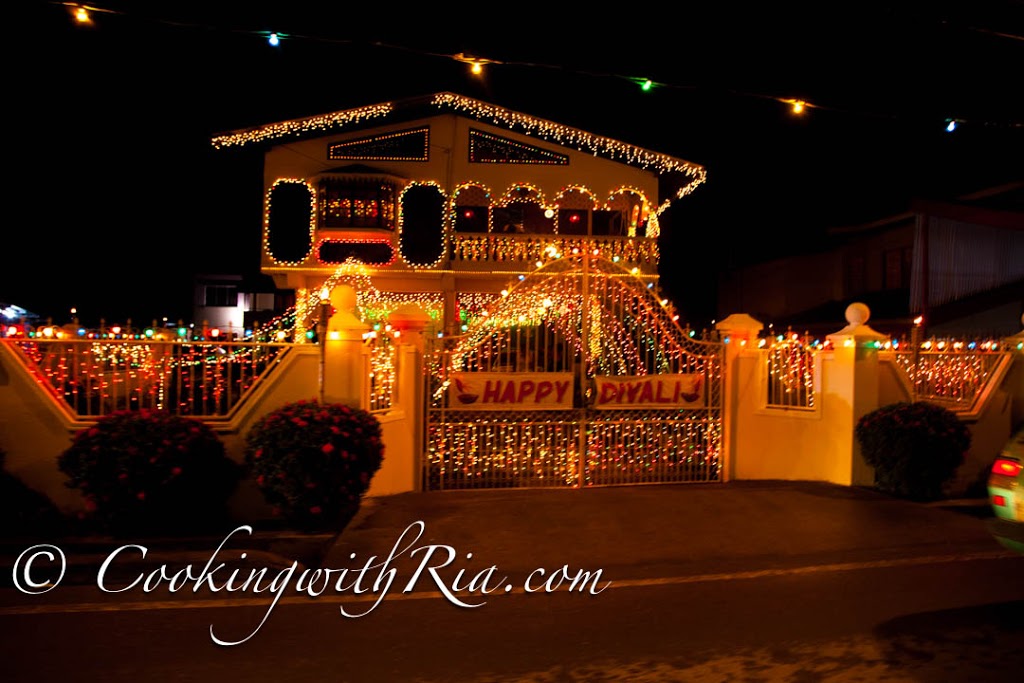
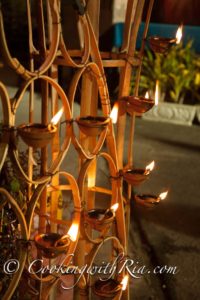
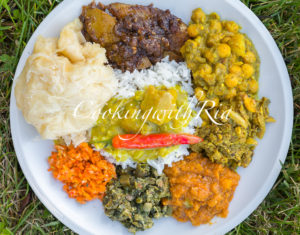
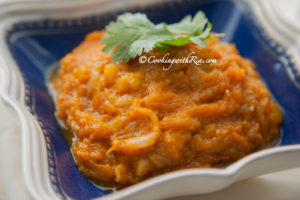
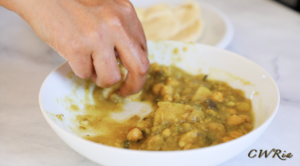

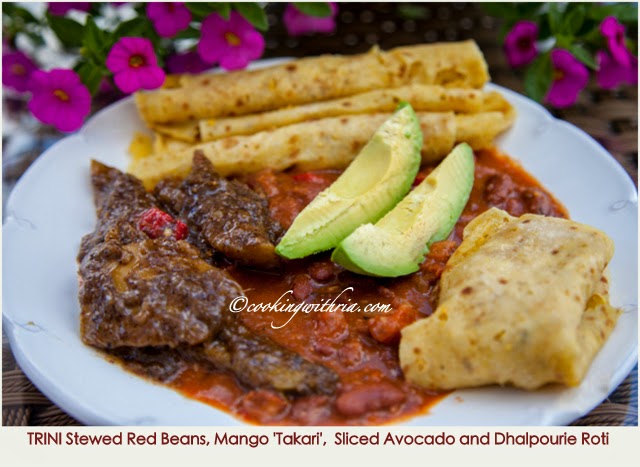
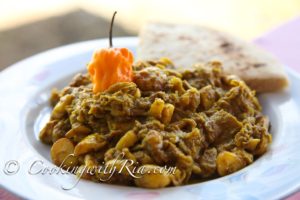
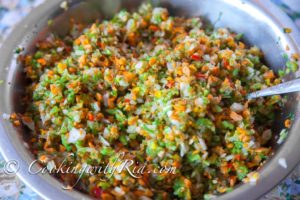
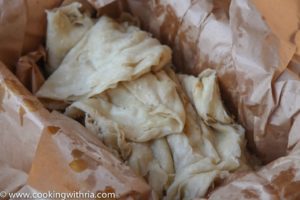
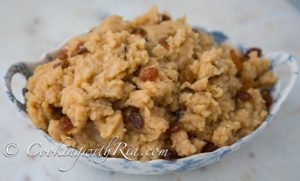
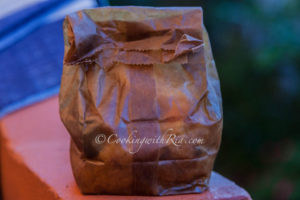
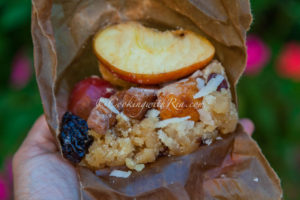
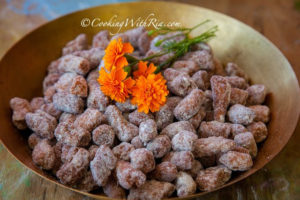
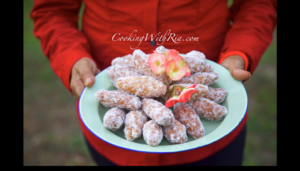




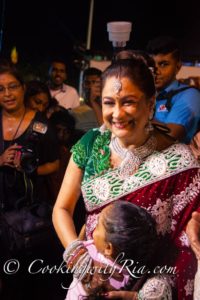


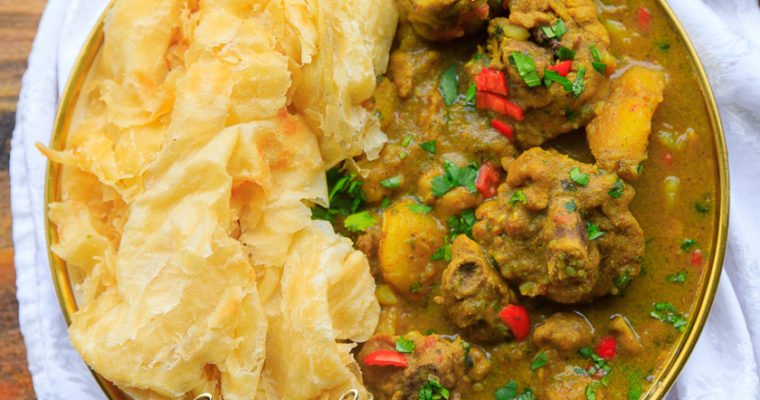
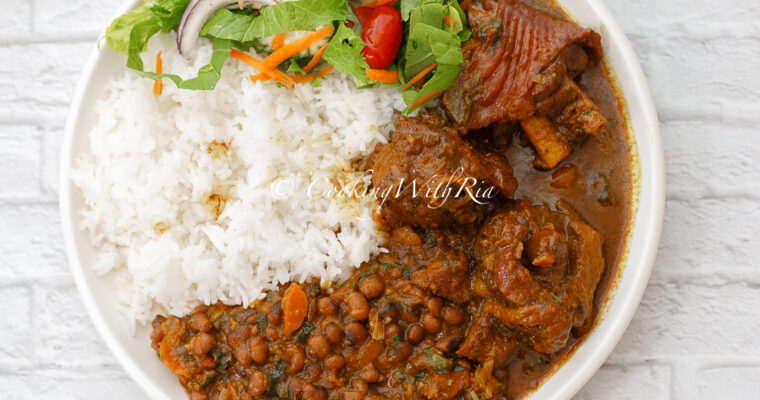

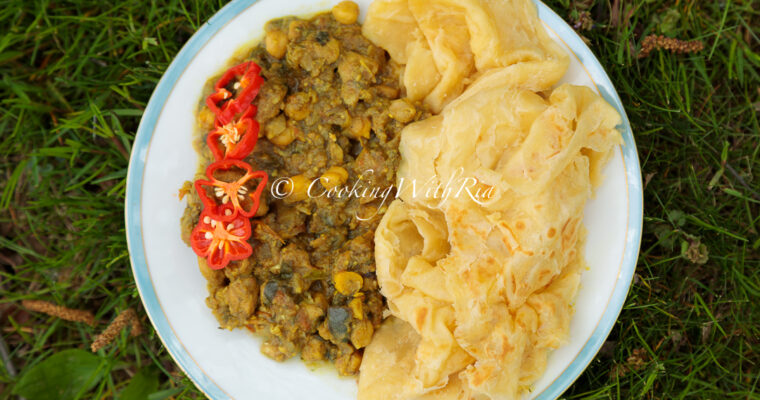


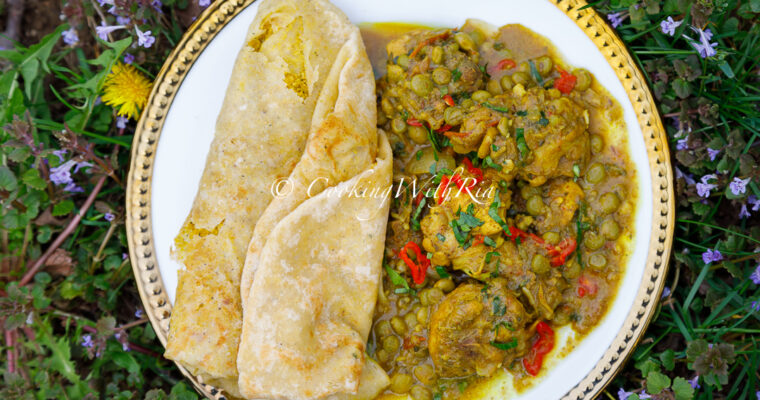
A great video. Loved the ladies cooking & chatting. Thanks, Ria!
Lovely lovely site…keep up the good work Ria.